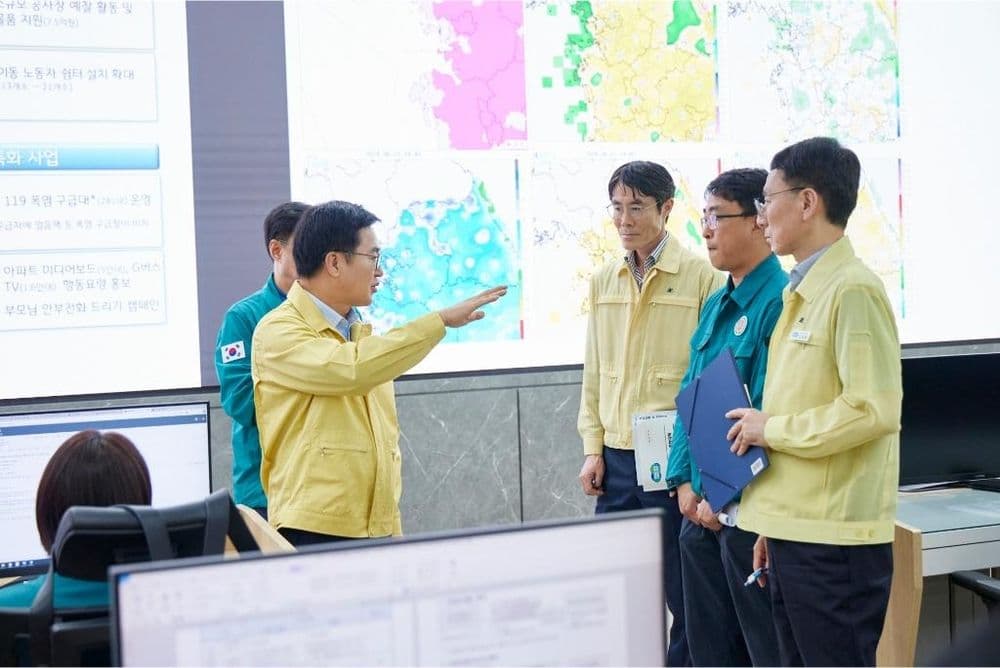Gyeonggi Province Elevates Heatwave Alert to Level 2 as Illnesses Surge

Rising Temperatures and Emergency Escalation
Gyeonggi Province elevated its Heatwave Disaster and Safety Countermeasures Headquarters to emergency level 2 on July 26 at 3 PM, marking the second time this summer that the province has escalated its response after historic highs [web:2]. Daytime heat indices surged above 39 degrees Celsius, contributing to a rapid increase in heat-related illnesses across the region [web:2]. This marks the second escalation this summer following the initial alarm raised on July 9, when the province first activated level 2 in response to record-breaking temperatures [web:4]. Over the course of July, more than 505 cases were recorded since May, with 438 occurring just in July, prompting authorities to adopt a more stringent alert system [web:22].
Government Measures and Community Response

In response, provincial authorities ordered the suspension of all work on 72 major construction sites between 2 PM and 5 PM daily when heat indices exceed 35 degrees Celsius, mandating additional rest breaks under the emergency guidelines [web:5]. The province also allocated 20 billion won to provide 50,000 won cooling subsidies to more than 390,000 vulnerable households and invested 1.5 billion won in cooling equipment for outdoor workers and field laborers, including ice vests and portable misting fans [web:5]. Heat shelters were reexamined, and real-time alerts via text messages, village broadcasts and electronic boards were amplified to guide public behavior [web:2]. Provincial Governor Kim Dong-yeon personally issued directives to all municipal offices, emphasizing protective strategies for vulnerable groups and urging residents to limit outdoor activities between 2 PM and 5 PM [web:2].
Cultural Insights and Local Innovations
Traditional markets in Suwon, such as Gumaetan and Motgol, have installed high-pressure misting systems that reduce ambient temperatures by up to 5 degrees Celsius, blending heritage spaces with modern cooling solutions to support local vendors and visitors during peak afternoon heat [web:13]. Gyeonggi’s pioneering "climate insurance" program offers residents up to 300,000 won in coverage for heat-related illnesses and accidents, reflecting a growing recognition of extreme weather as a socio-economic risk [web:13]. Local farming communities in areas like Pocheon have improvised shade nets and sprinkler systems across fields to protect crops and workers from heat stress, demonstrating community-driven innovation [web:13]. This approach underscores how local authorities integrate communal resilience into everyday life, illustrating a uniquely Korean fusion of tradition and advanced disaster management.
Voices from Online Communities
Blog responses have been largely positive, with official insights on emergency protocols praised for clarity and speed of action, while some residents raised concerns over the adequacy of shaded public spaces and the reach of communication campaigns [web:21]. A popular Naver blog highlighted the province’s comprehensive plan but questioned whether rural seniors receive timely support, echoing calls for more mobile cooling facilities in remote areas [web:28]. Others noted that despite the 2-level alert, on-site signage and multilingual guides for migrant workers remain inconsistent, urging continuous training and oversight [web:31]. Another blog pointed out mixed feelings about the 50,000 won cooling subsidy, applauding its intent but lamenting slow disbursement processes [web:22]. Overall, the online dialogue reflects a community eager to collaborate with authorities to navigate the summer safely [web:21].
Discover More

Gilles Vidal’s Triumphant Return to Stellantis Design
Gilles Vidal returns to lead design for Stellantis’ European brands on October 1, blending heritage and innovation while sparking community excitement and debate.

When Promises Fall Short Teenagers on Russia’s Frontline
This post explores the broken promise to spare 18 year olds from the Ukraine war examining personal stories policy shifts and the social uproar experienced in Russia